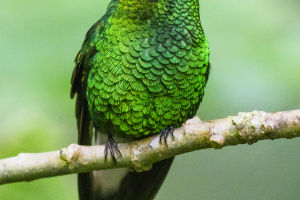In the marvelous tapestry of the natural world, starfish stand out as iconic creatures renowned for their enigmatic and awe-inspiring "rebirth abilities."
Legend has it that starfish can regenerate even when fragmented into several pieces, evoking marvel at their seemingly boundless regenerative prowess.
However, is this mystical phenomenon a genuine miracle or merely an embellished tale? This article aims to delve into the truth surrounding starfish's "rebirth ability" and unveil the scientific secrets underpinning it.
Firstly, let us comprehend the mechanism behind starfish regeneration. Starfish possess a remarkable ability known as "autotomy," wherein they can voluntarily detach damaged appendages and subsequently regenerate complete bodies quickly.
This adaptive trait enables starfish to survive predator attacks or other forms of external trauma, ensuring the stability of their populations.
Nonetheless, starfish's regenerative capabilities are not as infinite as folklore suggests. Despite their capacity to regenerate damaged tissue, they remain subject to physiological and environmental constraints.
The rate of starfish regeneration primarily hinges upon their species and the extent of injury incurred. Generally, minor wounds heal more expeditiously; under favorable conditions, a starfish may fully recover within a few weeks.
Conversely, extensive damage or severe injuries may necessitate months or even years for complete regeneration. Moreover, factors such as habitat conditions, nutritional status, and age also influence the efficacy of starfish regeneration.
Starfish are not "infinitely regenerative" beings despite their remarkable adaptability and resilience. Experimental evidence suggests that excessive or recurrent damage may impede their regenerative capacity, potentially hindering full recovery.
Therefore, it is erroneous to portray starfish's regenerative prowess as an unbounded miracle; rather, it should be regarded as an adaptive evolutionary strategy enabling survival and proliferation in adverse environments.
Furthermore, starfish's regenerative abilities are extraordinary but not unparalleled. Various organisms, including certain worms, aquatic species, and plants, exhibit analogous regeneration mechanisms, facilitating tissue repair upon injury.
Thus, while starfish's regenerative capabilities are impressive, they are not unique amidst nature's diverse life forms.
In summary, starfish's "regeneration ability" represents a remarkable biological phenomenon, allowing them to restore and reconstitute damaged tissue to their former state.
However, it is crucial to acknowledge that starfish's regenerative potential is finite and constrained by physiological and environmental factors.
Through comprehensive exploration of starfish regeneration, we can deepen our understanding of nature's marvels and glean insights for biomedical and ecological research advancements.


